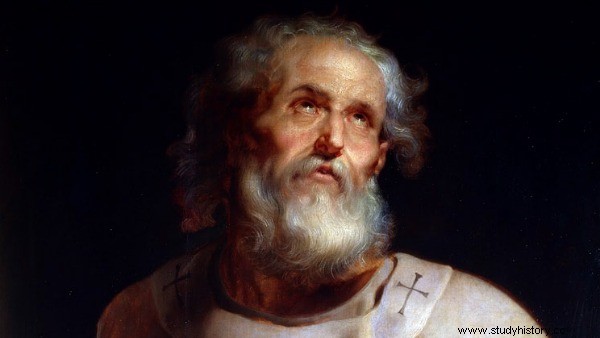
A reconstruction of the face of St. Peter
What do we know about Pietro, the fisherman who was the first apostle of Jesus and who later became one of the most important and loved saints in the history of the Church?
Who really was this man who left everything to follow his Master contributing to the beginning of a new era?
The biographical information , in reality, there are not very many, but there is some certainty about him.
Peter was born at the dawn of the Christian era in the small village of Betseda, near the lake of Tiberias.
His real name was Simone , it was Jesus who changed him after realizing that he had a character "rough as a stone".
The Gospels they tell us that in order to live he was a fisherman, led a simple life and lived with his wife, mother-in-law and children, until he established that his mission was to become a follower of Jesus, to whom he was bound a very deep feeling of friendship and boundless admiration, although he was sometimes polemical and grumpy due to his difficult and sometimes brusque character.
After the crucifixion and death of Jesus, Peter began his true religious "career" by baptizing and accompanying the conversion of many men, an activity for which he was arrested several times and which convinced him to leave Jerusalem for good.
In 42 A.D. Pietro arrived in Rome , where he certainly remained until his death, which occurred during the persecution of Christians ordered by the Emperor Nero , who had hypocritically blamed them for the serious fire that in 64 A.D. had half destroyed the city.
Sources tell us that Peter was crucified with his head down for him expressed will of him:he declared that he did not feel worthy to die as his Lord of him.
Thanks to the studies and excavations of archaeologists it was possible to find the house where St. Peter lived, while there is no certainty regarding the tomb , found in the meanders of the Vatican palace at the behest of Pope Pius XII, who had authorized the research in 1939:many elements lead us to believe that the sarcophagus is really that of the Saint and Martyr, but lacking certain and irrefutable proof, it remains, for now, only presumed.
